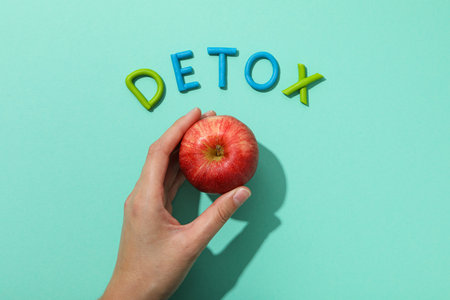Introduction to Colon Health in America
Across the United States, colon health has become a growing concern, touching the lives of millions. Colon-related issues such as irritable bowel syndrome (IBS), constipation, diverticulosis, and colorectal cancer are increasingly prevalent among Americans of all ages. According to recent statistics from the Centers for Disease Control and Prevention (CDC), colorectal cancer ranks as one of the most commonly diagnosed cancers in the country, highlighting the urgent need for effective prevention and awareness strategies. Unhealthy lifestyle habits, highly processed diets, and insufficient fiber intake contribute significantly to these problems. In this landscape, natural approaches to maintaining colon health are gaining traction. Preventative strategies—especially those centered on diet and fiber—are vital not only for reducing risk factors but also for supporting long-term digestive wellness. Understanding the importance of colon health and recognizing the pivotal role that daily dietary choices play can empower individuals to take control of their well-being and reduce the burden of colon-related diseases across American communities.
2. Understanding the American Diet
The typical American diet, often referred to as the Standard American Diet (SAD), plays a significant role in shaping colon health across the nation. Characterized by high intakes of processed foods, red meat, added sugars, and saturated fats, while being relatively low in dietary fiber, this dietary pattern presents unique challenges for maintaining natural colon health. The average American’s plate is frequently filled with convenience foods—think burgers, fries, pizza, and sugary beverages—which can disrupt the balance of gut bacteria and slow down digestive processes. This imbalance may lead to issues such as constipation, inflammation, and even increase long-term risks of colon disease.
Common Dietary Patterns in the United States
| Food Group | Typical Consumption | Impact on Colon Health |
|---|---|---|
| Processed Foods | High | May cause inflammation and disrupt gut microbiome |
| Red & Processed Meats | High | Linked to increased risk of colon cancer and other GI issues |
| Fruits & Vegetables | Low to Moderate | Lack of fiber reduces healthy bowel movements and protective effects |
| Sugary Beverages & Snacks | High | Contribute to obesity and poor gut health |
| Whole Grains & Legumes | Low | Insufficient intake leads to inadequate fiber for colon cleansing |
The Fiber Gap in America
One of the most critical gaps in the American diet is fiber intake. According to the USDA Dietary Guidelines for Americans, adults should consume between 25 to 38 grams of fiber daily. However, most Americans average only about 15 grams per day—less than half of what is recommended. This shortfall is primarily due to underconsumption of fruits, vegetables, whole grains, and legumes.
Cultural Influences on Eating Habits
The fast-paced lifestyle prevalent in the U.S. also contributes to poor dietary choices. Grab-and-go meals, drive-thrus, and microwave dinners are convenient but often lack essential nutrients that support colon health. Busy schedules can overshadow mindful eating practices, making it harder for individuals to prioritize fresh produce and whole foods.
In summary, the prevailing dietary habits in America create an environment where colon health is at risk due to insufficient fiber and an overreliance on processed foods. Understanding these patterns is crucial for initiating positive changes toward natural colon health among Americans.

3. The Importance of Dietary Fiber
Dietary fiber is a cornerstone of natural colon health, especially for Americans who often consume processed foods low in fiber. There are two main types of dietary fiber: soluble and insoluble. Understanding their differences and how they impact your digestive system can empower you to make choices that support a healthy colon.
Types of Dietary Fiber
Soluble Fiber
Soluble fiber dissolves in water and forms a gel-like substance in the gut. It can help lower cholesterol levels, regulate blood sugar, and promote the growth of beneficial gut bacteria. Common sources include oats, beans, lentils, apples, citrus fruits, and carrots.
Insoluble Fiber
Insoluble fiber does not dissolve in water. Instead, it adds bulk to stool and helps food move efficiently through the digestive tract. This type is vital for preventing constipation and promoting regularity. You’ll find insoluble fiber in whole grains like wheat bran, nuts, cauliflower, green beans, and potatoes.
The Role of Fiber in Colon Function
Fiber’s pivotal role in promoting natural colon function cannot be overstated. By increasing stool bulk and supporting efficient waste elimination, fiber reduces the risk of constipation—a common problem in the American diet. Moreover, high-fiber diets are linked to a lower risk of colon-related diseases, including diverticulosis and colorectal cancer. For Americans striving for better colon health, gradually increasing dietary fiber through whole foods is an actionable first step that aligns with both modern science and traditional wellness wisdom.
4. Common Fiber-Rich Foods in American Cuisine
When it comes to supporting colon health naturally, boosting daily fiber intake is a powerful and accessible strategy for Americans. Many traditional and popular foods found throughout the United States offer delicious ways to meet fiber needs. Whether you’re enjoying home-cooked classics or on-the-go snacks, integrating these fiber-rich options into your diet can make a significant difference for digestive wellness.
Everyday Fiber Heroes at the American Table
Fiber comes in two forms—soluble and insoluble—and both are important for optimal colon health. Luckily, many staple foods in American cuisine offer a mix of these fibers, making it easier than ever to support your gut.
Table: Popular Fiber-Rich Foods in America
| Food Category | Examples | Average Fiber Content (per serving) |
|---|---|---|
| Whole Grains | Oatmeal, whole wheat bread, brown rice, popcorn | 2–5g |
| Beans & Legumes | Black beans, lentils, chickpeas, pinto beans | 6–9g |
| Fruits | Apples (with skin), pears, raspberries, oranges | 3–8g |
| Vegetables | Broccoli, carrots, sweet potatoes, Brussels sprouts | 2–5g |
| Nuts & Seeds | Almonds, chia seeds, sunflower seeds, pistachios | 3–10g |
| Cereals & Snack Bars | Bran flakes, high-fiber granola bars, shredded wheat cereal | 3–7g |
The American Way to Add More Fiber Daily
You don’t have to overhaul your entire meal plan to get more fiber. Small swaps—like choosing whole wheat bread over white or snacking on popcorn instead of chips—fit seamlessly into the typical American lifestyle. Beans are easy to add to salads or chili; fruits like apples or oranges make portable snacks; and roasted veggies pair with almost any dinner.
Savoring Familiar Favorites with a Healthful Twist
Many American comfort foods can be made even better for your colon by adding extra vegetables or opting for whole-grain versions. For example, try making classic mac and cheese with whole grain pasta and tossing in steamed broccoli or peas. Or swap out regular crackers for ones made from seeds or whole grains when preparing snack platters.
5. Dietary Trends and Challenges in the U.S.
In recent years, Americans have become increasingly interested in health-conscious eating, leading to a surge in popular diet trends such as keto, paleo, intermittent fasting, and plant-based diets. While these approaches often promise improved wellness and weight loss, they can also create confusion about what truly supports colon health. Many of these diets focus on eliminating certain food groups or restricting carbohydrates—sometimes unintentionally reducing fiber intake. For instance, the ketogenic diet’s emphasis on low-carb foods may lead people to cut out whole grains, legumes, fruits, and even some vegetables, all of which are important sources of dietary fiber essential for a healthy colon.
Misconceptions about fiber are common. Some Americans associate high-fiber foods with blandness or digestive discomfort, while others believe that simply taking a fiber supplement is enough to meet their daily needs. Unfortunately, supplements often lack the full spectrum of nutrients found in whole foods and do not provide the same benefits for gut microbiota and overall colon function. Additionally, the rise of processed convenience foods—which tend to be low in fiber and high in sugar or unhealthy fats—creates further obstacles for those trying to maintain a diet rich in natural fibers.
Another challenge lies in the fast-paced American lifestyle. Busy schedules can make it difficult to prioritize home-cooked meals featuring fresh produce and whole grains. Dining out frequently or relying on packaged snacks often means sacrificing fiber intake for convenience. Economic factors also play a role; access to affordable fruits, vegetables, and whole grains varies greatly across different communities, contributing to disparities in colon health outcomes.
To overcome these challenges, it is vital for Americans to recognize the importance of integrating fiber-rich foods into their everyday routines—regardless of which diet trend they follow. Small changes like choosing whole wheat bread over white bread, adding beans to salads or soups, snacking on fruit instead of chips, and experimenting with new vegetables can make a meaningful difference. Ultimately, making informed choices and debunking myths about fiber is key to nurturing natural colon health in the face of evolving dietary trends and modern-day obstacles.
6. Practical Tips for Supporting Colon Health Naturally
Making healthy changes to support your colon doesn’t have to be overwhelming—small, actionable steps can make a big difference over time. Here are practical strategies that fit seamlessly into the American lifestyle, helping you boost colon health through mindful dietary choices.
Start with a High-Fiber Breakfast
Swap out sugary cereals or pastries for oatmeal topped with berries, whole grain toast, or Greek yogurt mixed with chia seeds. These simple switches increase your fiber intake from the get-go and keep you feeling full longer.
Incorporate Whole Grains at Every Meal
Whether it’s brown rice in your burrito bowl, quinoa in your salad, or whole-wheat pasta at dinner, aim to replace refined grains with their whole counterparts. Whole grains deliver more fiber and essential nutrients that promote regular digestion.
Make Fruits and Veggies Convenient
Busy American schedules often mean grabbing snacks on the go. Pre-cut veggies like carrots, celery, and bell peppers, or keeping apples and bananas handy, can help you reach the recommended five servings of fruits and vegetables daily without hassle.
Hydrate Throughout the Day
Fiber needs water to work its magic in your digestive system. Carry a reusable water bottle and set reminders to drink throughout the day—aiming for at least 8 cups (64 oz) of water daily is a good target for most adults.
Limit Processed Foods and Red Meat
Processed foods and high consumption of red meat have been linked to increased colon cancer risk. Try “Meatless Mondays” or opt for plant-based proteins like beans, lentils, or tofu a few times a week. Choose baked or grilled lean meats instead of fried options when you do eat animal protein.
Read Nutrition Labels
Many packaged foods marketed as “healthy” are surprisingly low in fiber. Check nutrition labels for fiber content—look for products with at least 3 grams of fiber per serving and minimal added sugars.
Listen to Your Body and Seek Balance
If new to high-fiber eating, increase your intake gradually to avoid bloating. Pair dietary changes with regular physical activity—like walking after meals—to keep your digestive system moving smoothly. Remember, supporting colon health is about making sustainable lifestyle adjustments rather than chasing quick fixes.
7. Conclusion: Embracing a Healthier Future
As we reflect on the vital role of diet and fiber in supporting natural colon health among Americans, several key takeaways stand out. First and foremost, a balanced and fiber-rich diet is not simply a trend—its an essential foundation for long-term digestive wellness. Choosing whole grains, fresh fruits, vegetables, and legumes over processed foods empowers our bodies to maintain regularity and reduce the risk of colon-related diseases. In addition, making small, sustainable dietary changes can lead to significant improvements over time. Prioritizing hydration, reading nutrition labels, and gradually increasing daily fiber intake are practical steps every American can take toward better colon health.
Embracing these lifestyle shifts is more than just a personal choice; it’s a collective movement toward a healthier future for families and communities across the United States. By educating ourselves and sharing knowledge with loved ones, we reinforce healthy habits that last a lifetime. Remember, true wellness comes from consistent action—every mindful meal and healthy snack is an investment in your well-being. Let’s commit to making smarter choices today, so we can enjoy active, vibrant lives tomorrow. Your journey to natural colon health begins now—step forward with confidence and embrace the benefits of lasting change.


